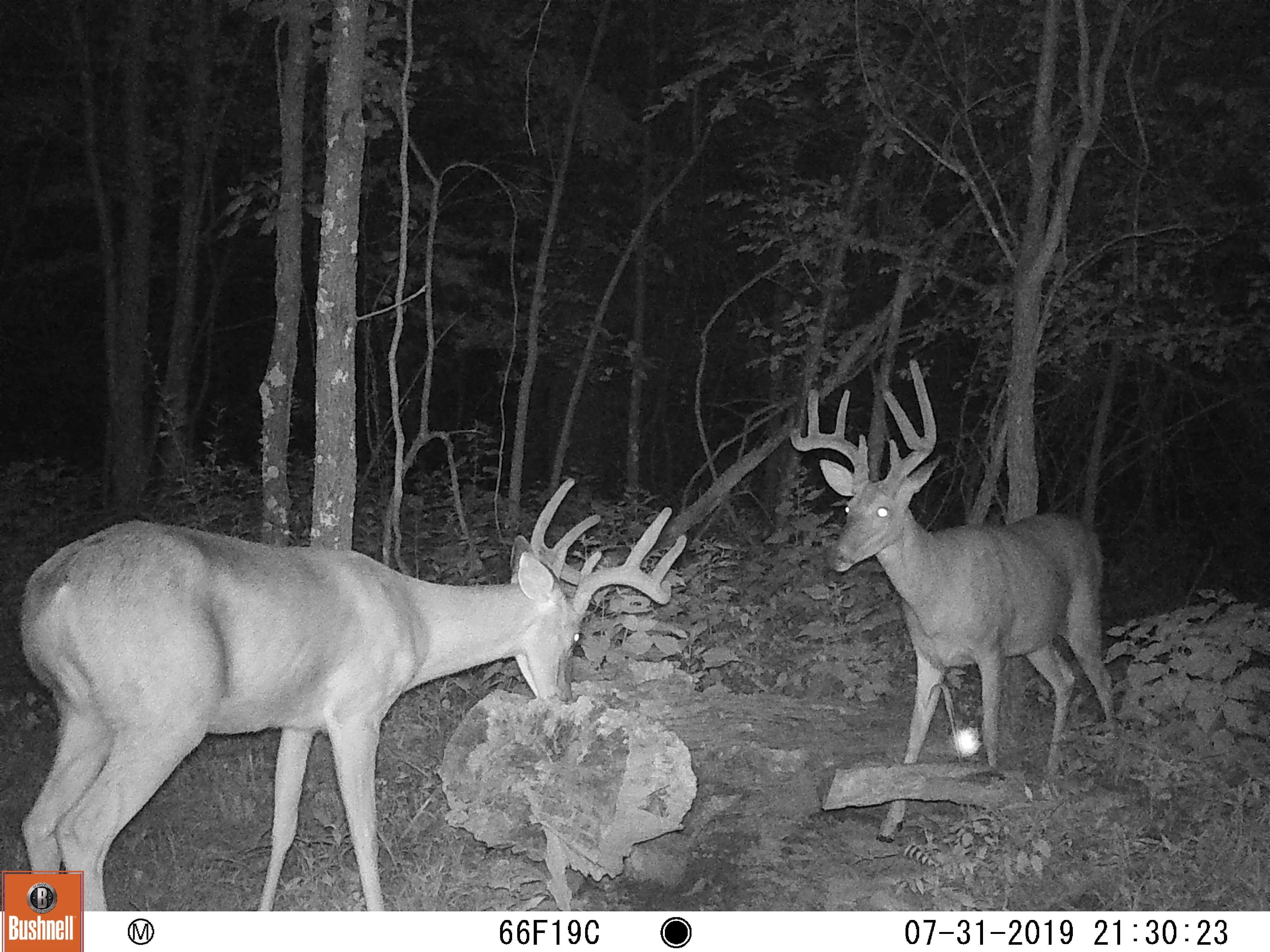Patoka Sportsman 8-17-19
Patoka Sportsman 8-17 & 8-18-19
The Department of Natural Resources confirmed Monday that the deer recently found dead in Clark County tested positive for the EHD virus. DNR says additional testing is required to determine the strain of EHD virus. EHD is a viral disease that may affect white-tailed deer to some degree every year. It typically occurs during late summer and early fall, and DNR says there is evidence that outbreaks may be worse during drought years.
The virus is transmitted by flies commonly known as biting midges, sand gnats, and “no-see-ums.” Humans are not at risk for contracting hemorrhagic disease. The testing comes as DNR investigates reports of sick or dead deer in central and south-central Indiana. Officials say Clark County seems to be experiencing the most intense outbreaks thus far, but reports have come from 10 counties total.
“Although the reports DNR is receiving are consistent with EHD episodes of past years, it’s important for testing to be done on samples before it can be confirmed,” said Dr. Joe Caudell, DNR deer research biologist. “Samples need to be collected as soon as possible after the deer dies to be most useful for testing.” Caudell worked with conservation officers to collect an adequate sample from the one that tested positive for EHD, on Aug. 2.
Dr. Nancy Boedeker, DNR wildlife veterinarian said “Deer infected with EHD may appear depressed or weak and often seek out water. Other signs may include a blue-tinged tongue, swelling of the head, neck or eyelids, ulcers on the tongue and the oral cavity, or sloughed hooves.” The DNR says hemorrhagic disease is often fatal to deer, but some will survive the illness. Not every deer in an affected area will contract hemorrhagic disease. Localized death losses during an outbreak can range from negligible to greater than 50 percent. Outbreaks can be more severe in years in which there is a wet spring followed by a hot, dry fall. Severe outbreaks rarely occur in subsequent years due to immunity gathered from previous infections.
If you see a deer that you suspect may have died from EHD, you can report it directly to the DNR through their website at deer.dnr.IN.gov. Just click on the link for Report a Dead or Sick Deer. The DNR monitors for EHD annually. The most recent significant outbreaks were in 2007 and 2012.
The Patoka Lake Watershed Steering Committee encourages individuals, families, friends and service groups to save the date for the 13th annual Patoka Lake Clean Up on Saturday, August 24 at the Patoka Lake Dam. Participants of all ages and abilities can sign up on location at 8 am EDT and will be assigned an area to pick up trash and recycling along the shore. All supplies are provided; volunteers just need to show up! The event takes place at the Patoka Lake Corps of Engineers office at the Patoka Lake Dam. For information or to register a group in advance, call the Patoka Lake Nature Center at 812-685-2447 or check the Patoka Lake Watershed Steering Committee Facebook page for updates.
Reserved hunt application periods are open for dove, waterfowl, deer and pheasant. The application period for deer will close Aug. 26. Waterfowl and pheasant application periods will close on Sept. 16. You can only apply for these hunts online. To get started with an application, go to on.IN.gov/reservedhunt and click on “Apply for a reserved hunt.” Only one application per hunt is allowed, and no changes can be made once an application is submitted. Applicants must possess a hunting license valid for the hunt for which they are applying.
Summer scouting for whitetails is nearly a lost art these days. At least, when it comes to utilizing the full gamut of intel-gathering options that bowhunters have available. The prevalence of quality, affordable trail cameras has given most of us the excuse to stay in the air conditioning while our 24/7 digital scouters do the work, meaning we sometimes ignore two-thirds of the many strategies we should be utilizing.
Trail cameras are a tool that should be used to complement a wise boots-on-the-ground scouting strategy. And don’t forget that long-range glassing should play into your summer routine too, because the value of watching the whitetails’ world through a spotting scope can be immeasurably high. This means that the summertime scouting approach that takes into account these three most-popular methods is often the best.
Technology is wonderful in many, many ways. From digging into aerial photography to hanging a camera on the side of a tree, all bowhunters have high-tech options for pinpointing deer hotspots. With the aerial photography and topo maps, the best bet for right now is to seek out water sources, food sources, and travel routes that bucks will use throughout the season. Your goal after identifying potential hotspots should be to make a plan to start covering ground, which is where the foundation for good deer intel is laid.
The idea behind heading into the woods right now is to accomplish two things. The first is to check out the spots you identified in your digital scouting. If you saw what looked like a killer pinch point along a ditch, or maybe a creek crossing, get in there and really look at the area. If it’s pounded with tracks, an obvious clue, you know you’re onto something.
If that creek crossing is gouged out and pock-marked with hundreds of whitetail tracks, you’ll feel a strong urge to hang a camera there. Don’t. Instead, look for a good stand tree or ground-blind ambush site and mark your spot. Figure out how to hunt it, because if you’re dealing with a quality travel route that is loaded with sign, you don’t need a trail camera to tell you the deer are using it. Just figure out how to hunt it. The next time you return should be to hang a stand in the pre-season, or hang-and-hunt during the open season—not to check a camera that is going to tell you what you already know. If you have a hunch a spot is good, but isn’t obviously a deer highway, use your camera to scout it for you. That’s where the value of a trail camera is highest.
Hiking into bedding areas and hanging cameras is an in-your-face strategy that is necessary, but should fall into the category of quality over quantity. Setting the spotting scope up in the evening to view distant whitetails is different. It’s a low-impact, potentially high-reward strategy that works as a great complement to the other two styles and if you do it right, allows you to scout for as many days as you need. If you’ve got some agricultural fields or destination food plots to watch, you should be watching them.
The goal, no matter what hunting situation you’re working with, is to take a seat and watch. What you’ll find is that when you stop walking and start watching, you begin to unravel the daily lives and travels of the local game animals.
The value to this is several-fold. First off, seeing mature bucks in their natural habitat, which is never easier than in the summer months, gives you the chance to watch a critter that is very, very difficult to locate at other times of the year. Watching where he walks, what he browses on or drinks out of, can all help you out when it comes to hunting him—or other deer of his caliber. That can be a huge advantage.
You’ll see obvious behavior, of course, like the bachelor group that trots into the far corner of a green soybean field and starts munching away. If you spend enough time glassing, you’ll also see less-obvious behavior like how all of the deer use certain terrain features. Some of that movement will be year-round, meaning you’ll be able to take advantage of it during the season. Again, these are details not to take lightly.
Scouting is every bit as important as time spent on stand, but it has to be done with a bend toward actually figuring out what the local deer like to do. This means you’ve got to efficiently cover ground with a solid plan of attack, while hanging cameras in strategic spots you’re curious about. Backdrop that with a smart long-distance strategy, and you can put together a pretty good picture of what your local deer herd is doing, no matter whether you’re on a private farm, or hunting heavy-pressure public dirt.




